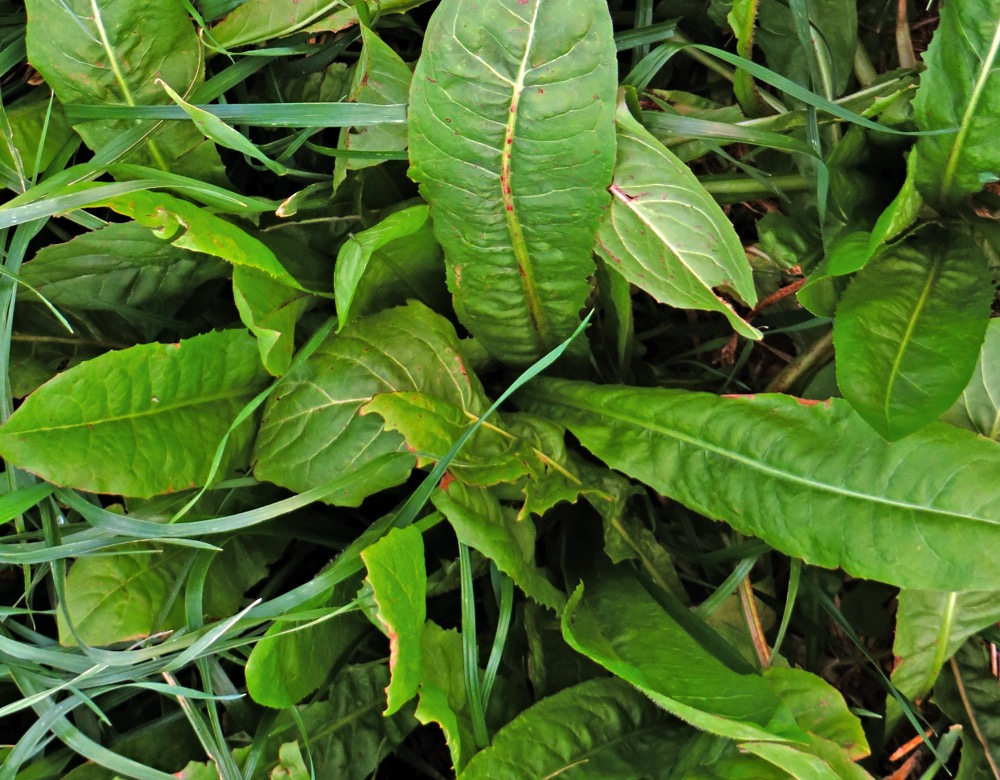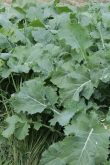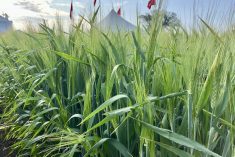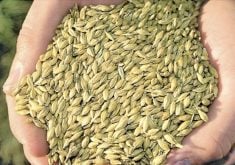Clayton Robins, the current executive director of the Manitoba 4-H Council, has been researching forages for a number of years. In 2008 he was part of a team from Canada that went to Argentina to look at the forage-fed beef value chain.
“We spent most of our time there with Dr. Anibal Pordomingo who was their guide and translator in addition to being a renowned beef and forage scientist. He showed us a slide one morning (that) demonstrated plant water-soluble carbohydrate (sugar) levels in cereals as they advance physiologically,” recalls Robins.
“As the sugars changed, they looked at animal gain. There was a very linear and well-correlated relationship. As the sugars went up, animal gains went up, to impressive levels. We had been struggling with how we could make forage finishing work, as part of our research program. That was a light-bulb moment to me, realizing that we needed to look at plants differently,” he says.
“We dabbled with trying to do some evaluations at the (Brandon) research station while I was still there. A couple of years later I left the research community to take the job with 4-H, and didn’t get a chance to finish up that work. But I still wanted to pursue this and learn a few more things about it. I realized that one of the best opportunities to maybe find some of those answers was the Nuffield program.
Read Also

Why post-drought pasture management matters for beef farmers
Pasture management is always important, but it is especially important following a drought. During these challenging periods, pastures may suffer…
Nuffield Canada is part of an international organization of scholars, founded on the development of leadership in agriculture, and based on the international pursuit of knowledge in order to inspire change. Robins applied to this program and was fortunate to be chosen as one of the 2013 scholars which gave him the opportunity to go anywhere in the world to meet with some of the leading experts in their respective fields, to get some answers
“I went to many of the regions that practise longer grazing times than we do, with a lot more emphasis on looking at plant sugars and other forms of metabolizable energy in the plant. We tend to focus more on fibre in North America. I looked at some of the plants that other countries were using, and the influences those plants have on ruminant digestive efficiency and even their impact on everything from greenhouse gases to their potential to build soil,” he says.
“In my report that will soon be released, I also included a section on energetics (energy in and energy out of a system), based on some published research from my time at the Brandon Research Centre,” he says.
“One of the interesting things that has phenomenal potential if we can make it work, is the ability to initiate early development of marbling cells in young, developing animals. A lot of that work at this point has been done with early-weaned calves fed high-energy diets, but I’m wondering if we can get that same effect under grazing, with that calf still on the cow — rather than feeding grain or some other high-energy supplementation. It does require a sustained supply of high levels of energy to trigger the phenotypic and physiological responses,” he adds.
Researchers around the world have come to the same conclusion. Investigators in New Zealand will be assessing early-weaned calves (beef and dairy) eating forage instead of concentrates/grain to achieve these results. “They will be evaluating impact on carcass quality and earlier time of slaughter — with the expectation of improved marbling,” he says.
“We did a lot of work with swath grazing in Brandon, including some trials looking at understory crops, with some success. I’ve continued to try to do some new things at home, bringing in plants that we hadn’t really considered when we began. Currently I am seeking species like tetraploid Italian ryegrasses (which are capable of accumulating the greatest amount of plant sugars, of all the grasses) along with chicory and forage plantain, as well as a few legumes.”
He is trying to create a mixed crop of annuals that will grow all year long. “Normally we look at swath grazing or silage or cereal grain as about 75 days of active growing, putting carbon into the soil. I am putting that same crop into the ground, but adding an understory of ryegrasses, chicory, plantains and clovers, and then early harvesting of the cereal and leaving it in the field. Until now we have used small square bales but I’d like to try wrapped round bale haylage. We leave the bales in the field for the cattle to utilize later, and let the understory crop regrow for later grazing,” he explains.
The field can be strip grazed, opening the bales up for the cattle instead of leaving swaths. The baled forage holds quality better and doesn’t deteriorate as much as it would in the swath, if there is rainfall.
“I have been working with ryegrass and chicory so far, hoping to bring in some plantain. Another grass I am really interested in is festulolium, which is a cross between ryegrasses and fescue. There can be various combinations, but the ones I am focusing on are varieties that are 90 to 95 per cent Italian ryegrass and five to 10 per cent meadow fescue. This gives it much deeper rooting, with the same leaf expression and potential to accumulate sugars like the Italian ryegrass, but hopefully it will be able to withstand the drier conditions of the Canadian prairie a little better than ryegrass,” says Robins.
He has been growing some of these species for a while and had a decent stand this past year. “On October 25, which is really late in our part of the world for perennial forage grazing because the plants are dormant and lower in quality by that time, I did analysis of these plants. The Italian ryegrass on my farm on that date was 38 per cent sugar and the chicory was 31 per cent. The TDN was halfway between oats and barley grain.” The net energy for gain on the chicory especially, was approaching the Mcal/kg of grain barley.
“I have looked at many forage analyses in my life, spending 22 years as a research assistant with Ag Canada in forage and beef production, and have never been so happy to see such a set of forage analyses. These are very high levels of energy that I think we can use to potentially stimulate early development of marbling cells. It can help us make improvements in carcass quality of forage-fed beef, compared with what we try to do now,” he says.
Canada has an advantage over the U.S. and many other beef-producing regions in the world because the days are a little longer during the growing season, with more time to accumulate sugar, and the evenings are a little cooler.
“We don’t experience as much respiration in the evening to burn up those sugars. We also have a lot of solar intensity. I live in Rivers, Man. An air base was built here during the Second World War because this area was claimed to have the most cloudless hours of sunlight in Western Canada. When you consider low temperatures and solar intensity, those are two of the biggest drivers for encouraging plants to accumulate high levels of plant sugars, yet this is something we haven’t paid much attention to.”
These plants have all been looked at before in Canada, but they were abandoned because they wouldn’t overwinter. “We were always focused on longevity, which has a lot of merit when we want plants that grow every year. But we have to accept the fact that these are not going to survive Canadian winters on the prairie and that we’ll have to seed them every year,” says Robins.
“But if we utilize them as understory crops to go along with cereal harvest, with lots of yield, we can achieve greater carrying capacity per acre and the potential gain per acre will be high. If we can initiate early marbling cell development, which might take time off the end point for finishing and feeding at the end of that animal’s life, then the economics start to look very good. The cost of annual seeding becomes almost inconsequential,” he explains.
“If we have plants that contain 30 per cent sugar in October, we can do a lot with them. My strategy is to look at August, September and October as a three-month grazing window for these plants.” With a high-quality overstory cereal crop, this becomes attractive. Now we just need to grow more of these forages and see what they can actually do at different points during that three-month grazing period.
“I am not sure how many good grazing days we might get. Based on what I am seeing right now with my cattle at home, I am looking at being able to carry 70 steers on an acre for three to 3.5 days. If we can push the gain higher on those steers, with that kind of carrying capacity, the numbers start to look very good, economically,” he says.
“There are other parts of Canada that can do this. This might be a way to rebuild a beef-feeding enterprise without having to go the feedlot route,” says Robins.

















